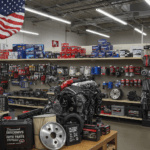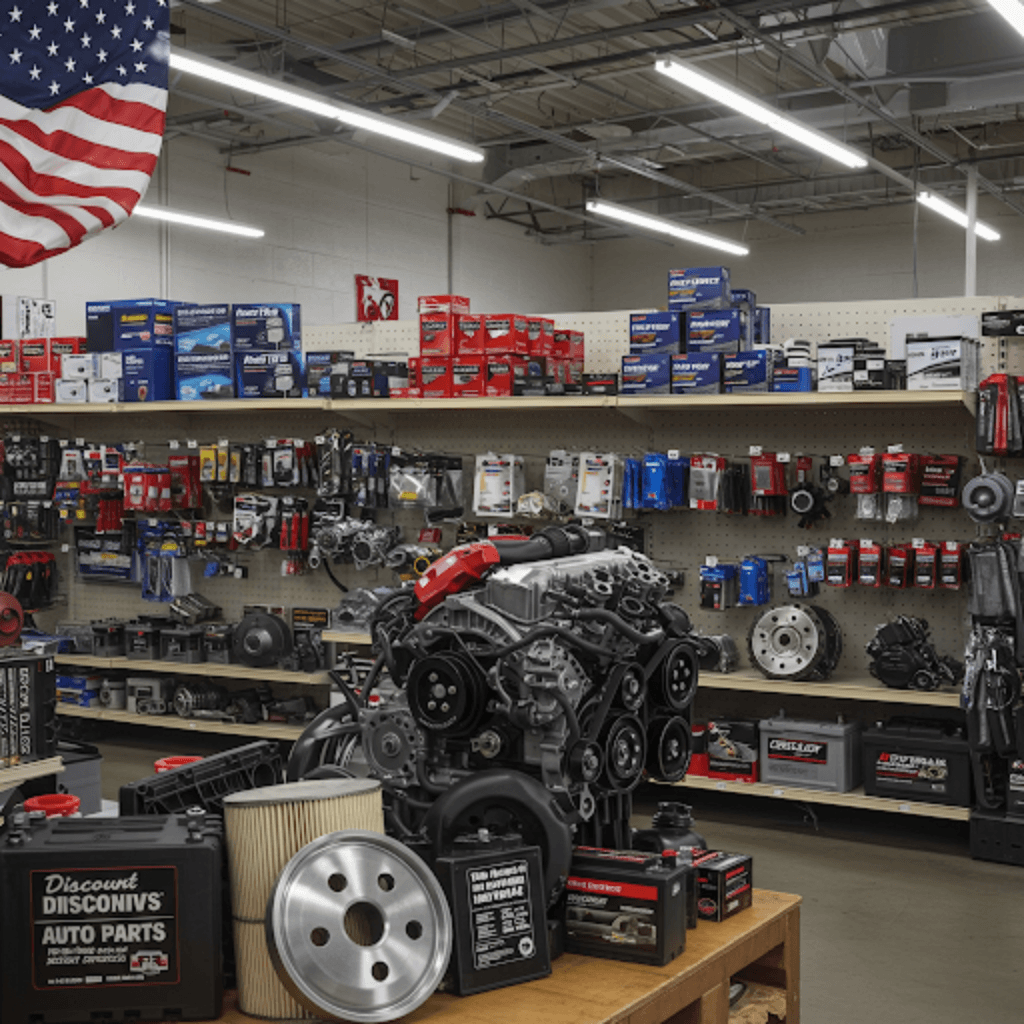
Finding the best discount auto parts near you: A comprehensive guide
Keeping your car running smoothly shouldn’t break the bank. Whether you’re a seasoned mechanic or a DIY enthusiast tackling your first oil change, finding quality discount auto parts is crucial. This guide will provide you with everything you need to know to locate the best deals on auto parts in your area, saving you money without sacrificing quality or reliability.
Understanding your needs: Identifying the right part
Before you start your search, it’s essential to pinpoint exactly what you need. This might seem obvious, but knowing the precise make, model, and year of your vehicle, along with the specific part number (if possible), will save you time and frustration. A wrong part can lead to delays, potential damage to your vehicle, and the hassle of returns.
There are several ways to identify the correct part:
- Your vehicle’s owner’s manual: This often contains detailed diagrams and part numbers.
- Online parts catalogs: Many websites offer parts finders where you can input your vehicle’s information to get a list of compatible parts.
- The old part itself: Often, the part number is stamped or printed directly on the old part.
- Consulting a mechanic: If you’re unsure, a quick call or visit to a trusted mechanic can help you identify the correct part.
Exploring your options: Where to find discount auto parts
Once you know what you need, it’s time to start hunting for the best deals. There are numerous avenues to explore, each with its own advantages and disadvantages.
Local auto parts stores
These are the brick-and-mortar stores you see in your community. Major national chains like AutoZone, Advance Auto Parts, and O’Reilly Auto Parts are common, but don’t overlook independent local stores. Local stores often offer competitive pricing and personalized service.
Advantages:
- Immediate availability: You can often get the part you need the same day.

- In-person assistance: Knowledgeable staff can help you find the right part and answer questions.
- Easy returns: If you get the wrong part, returning it is usually straightforward.
Disadvantages:
- Potentially higher prices: Prices may be higher than online retailers due to overhead costs.
- Limited selection: Inventory may be limited compared to online options.
Online retailers
The internet has revolutionized the auto parts industry, offering a vast selection and often lower prices. Websites like Amazon, eBay Motors, and RockAuto are popular choices, along with the online stores of the major national chains.
Advantages:
- Wide selection: You’ll find a massive inventory of parts for almost any vehicle.
- Competitive pricing: Online retailers often have lower prices due to reduced overhead.
- Convenience: You can shop from the comfort of your home, 24/7.
Disadvantages:
- Shipping time: You’ll have to wait for the part to be shipped.
- Potential for incorrect parts: Double-check compatibility before ordering.
- Returns can be more complex: Returning parts may involve shipping and restocking fees.
Junkyards/Salvage yards
For the budget-conscious and those comfortable with used parts, junkyards (also known as salvage yards or auto recycling centers) can be a goldmine. These businesses dismantle wrecked vehicles and sell the usable parts.
Advantages:
- Lowest prices: Used parts are significantly cheaper than new parts.
- Good for older vehicles: You may find parts for older or discontinued models that are no longer available new.
- Environmentally friendly: Recycling auto parts is a sustainable practice.
Disadvantages:
- Condition of parts: Parts are used and may have wear and tear.
- No warranty (usually): Most junkyards don’t offer warranties on used parts.
- You may need to remove the part yourself: Some junkyards require you to remove the part from the vehicle.
Local auto repair shops
While they are focused on repair, Some local shops will also sell you parts.
Advantages:
- Expert part sourcing: mechanics know how to get quality part.
- Fast and local: You can quickly purchase parts.
Disadvantages:
- Higher Cost: Parts may be more expensive.
Strategies for maximizing savings
Beyond choosing the right type of retailer, there are several strategies you can employ to get the best possible price on auto parts:
- Compare prices: Don’t settle for the first price you see. Check multiple sources, both online and offline.
- Look for coupons and discounts: Many auto parts stores offer coupons and discounts, especially online. Sign up for email newsletters and check websites like RetailMeNot.
- Consider buying in bulk: If you know you’ll need multiple parts, buying them together can sometimes save you money.
- Negotiate: Don’t be afraid to negotiate, especially at independent stores and junkyards.
- Join loyalty programs: Many auto parts stores have loyalty programs that offer rewards and discounts.
- Check for online promotions: Look for special online promotions, such as free shipping or percentage-off discounts.
- Consider remanufactured parts: Remanufactured parts are used parts that have been rebuilt to meet original factory specifications. They are often cheaper than new parts and come with a warranty.
- Buy during off-peak seasons: Demand for certain parts may fluctuate seasonally. You might find better deals during off-peak times.
Understanding part quality: OEM vs. Aftermarket vs. Used
When buying auto parts, you’ll encounter three main categories:
- OEM (Original Equipment Manufacturer): These parts are made by the same company that supplied the original parts for your vehicle. They are generally the highest quality and most expensive.
- Aftermarket: These parts are made by companies other than the original manufacturer. Quality can vary widely, so it’s important to research reputable brands. Aftermarket parts are often more affordable than OEM parts.
- Used: These are parts taken from salvaged vehicles. They are the cheapest option, but their condition and lifespan are uncertain.
The best choice for you depends on your budget, the age of your vehicle, and the importance of the part. For critical components like brakes or engine parts, OEM or high-quality aftermarket parts are recommended. For less critical parts, used or lower-cost aftermarket parts may be suitable.
Avoiding common pitfalls
Here are some common mistakes to avoid when searching for discount auto parts:
- Buying the wrong part: Double-check compatibility before purchasing.
- Ignoring quality: Don’t sacrifice quality for price, especially for critical components.
- Failing to compare prices: Shop around to get the best deal.
- Not reading reviews: Check online reviews of retailers and parts before buying.
- Forgetting about shipping costs: Factor in shipping costs when comparing online prices.
- Assuming all used parts are equal: Inspect used parts carefully before purchasing.
The long-term perspective
While saving money on auto parts is important, remember that the cheapest option isn’t always the best in the long run. Investing in quality parts can prevent future repairs and extend the life of your vehicle. Consider the total cost of ownership, including the cost of the part, installation, and potential future repairs, when making your decision.
By following this guide and taking approach, you can find quality discount auto parts without compromising your vehicle safety and reliability.







